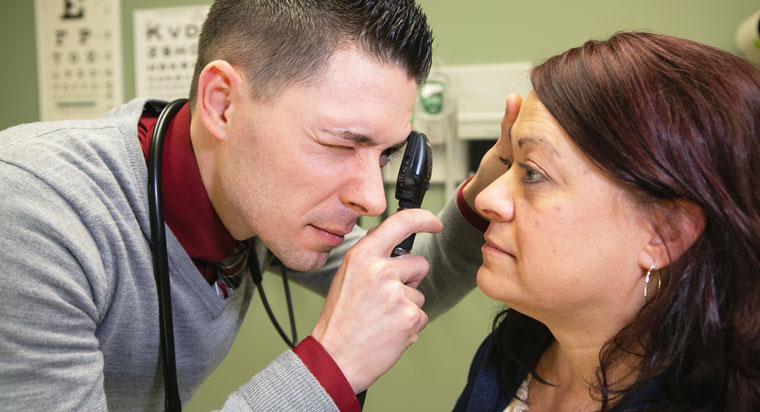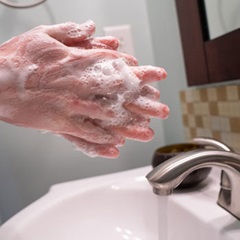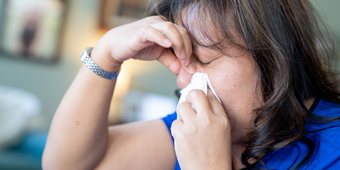Pretty In Pink? Not When It’s Pink Eye

Answer a few questions and we'll provide you with a list of primary care providers that best fit your needs.
Struggling with red, swollen, painful eyes? You may have conjunctivitis, also called pink eye. It happens when the conjunctiva — the thin, clear lining of the inside of the eyelid and white part of the eyeball — is irritated by an infection or allergies.
How Do You Get Pink Eye? Is It Contagious?
There are several types of pink eye. Some are especially contagious, including:
- Viral conjunctivitis. This is the most common type of pink eye. It’s usually caused by the same common cold virus that triggers a runny nose and sore throat.
- Bacterial conjunctivitis: Bacterial infections bring on this kind of pink eye. Sometimes the bacteria that cause pink eye are the same as those that cause strep throat.
The most common ways to get these contagious forms of pink eye include:
- Touching an infected person’s bodily fluids, usually through hand-to-eye contact
- Spreading the infection from bacteria living in the person’s own nose and sinuses
- Not cleaning contact lenses properly
Other types of pink eye are equally annoying but are not contagious. They include:
- Allergic conjunctivitis. An allergic reaction to pollen or animals.
- Chemical conjunctivitis. Irritation from cigarette smoke, car fumes, or pool chlorine.
Most pink eye infections will clear up on their own in a week or two. But some types can pose more serious risks.
 How Is Pink Eye Treated?
How Is Pink Eye Treated?
Treatment of pink eye depends on the cause:
- Viral. Just like a common cold, the pink eye virus has to run its course — which may take as long as two to three weeks. Symptoms can be eased with cool compresses and artificial tear solutions. If you have a severe case, your doctor may prescribe topical steroid drops to reduce discomfort.
- Bacterial. This type of pink eye is usually treated with antibiotic eye drops or ointments. Symptoms may improve significantly after three or four days. Be sure to finish the medicine to prevent recurrence.
- Allergic. The first step is to remove what’s irritating your eyes. Cool compresses and artificial tears can relieve pain in mild cases. More severe cases may call for antihistamines or NSAID (nonsteroidal anti-inflammatory drugs) like aspirin and ibuprofen.
- Chemical. Start by flushing your eyes with saline. You may also need a topical steroid. Severe chemical injuries can lead to scarring, damage to the eye, or even loss of the eye. If a chemical comes in contact with your eye, flush the eye with lots of water for several minutes, then seek immediate medical attention.
When Should You See a Doctor?
Most pink eye infections will clear up on their own in a week or two. But some types can pose more serious risks. Make an appointment with your health care provider if you have any of these symptoms:
- Moderate to severe eye pain
- Sensitivity to light or blurred vision
- Intense eye redness
- A weakened immune system, for example, from HIV or cancer treatment
- Symptoms that worsen, including bacterial pink eye that doesn’t get better after 24 hours of antibiotic use
- Preexisting eye conditions that may put you at risk for complications
Answer a few questions and we'll provide you with a list of primary care providers that best fit your needs.
Sources: American Academy of Ophthalmology; American Optometric Association; Centers for Disease Control (CDC); Medline Plus




